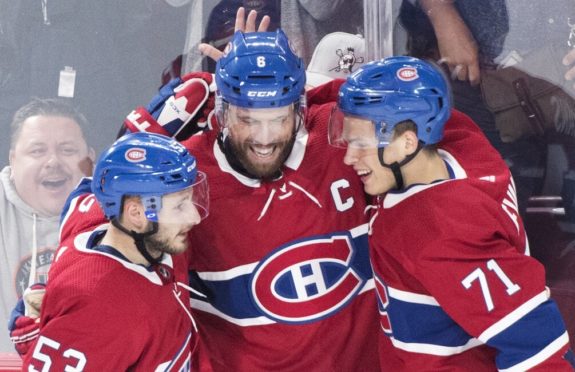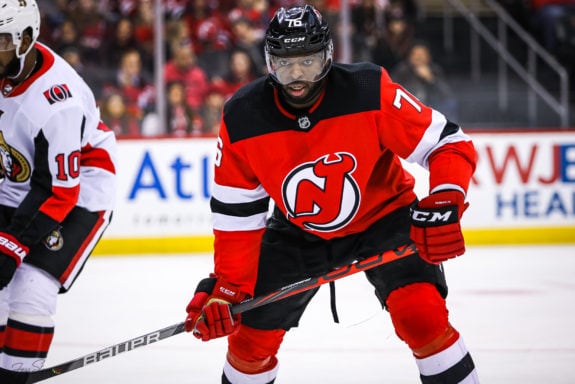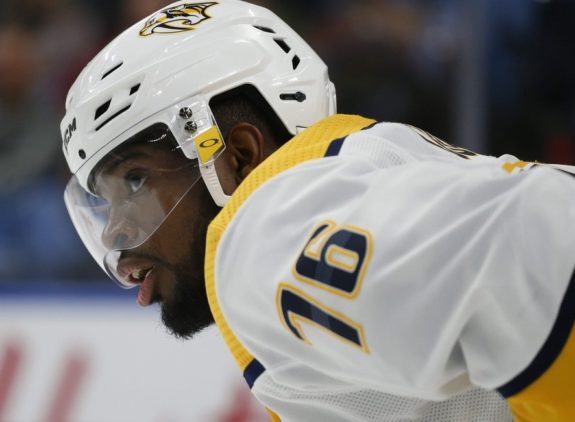Assessments of the Shea Weber, P.K. Subban trade are like candy. Everyone wants a piece, but once you ingest too much you’re bound to get sick.

Changing circumstances, like the tentative Collective Bargaining Agreement, don’t exactly help matters, because just as you were getting used to it, the rug gets pulled out from under you. In that sense, the trade is like an everlasting gobstopper specifically. Let me explain:
Revisiting the Weber-Subban Trade
Consider how, when news first broke, objective onlookers believed it was a bad deal for the Montreal Canadiens. That opinion was re-affirmed as the Nashville Predators reached the third round of the playoffs and then Stanley Cup Final for the first time in franchise history the very next season.
In effect, it seemed as though Predators general manager David Poile had made a fool of counterpart Marc Bergevin. Subban even got nominated for the James Norris Memorial Trophy the next season to add insult to injury.
One Subban trade to the New Jersey Devils later followed by a bad season and many analysts have been quick to argue the Canadiens are the winners right now. Just like a gobstopper though, this thing can go on forever, at least until 2026 in theory when Weber’s contract expires.

It’s one aspect many have glossed over, especially Subban critics. Weber will be on the verge of turning 41 then. To his credit, Weber hasn’t declined like many, myself included, had predicted. Nevertheless, it’s unlikely he’ll continue to play at a high level into his late thirties, unlikelier still at a level worthy of his $7.86 million hit. It will be costly, especially now that the cap will potentially be staying flat at $81.5 million for the next few seasons.
Predators Dealt Weber for a Reason
Logically speaking, it was always part of the reason why the Predators wanted to trade Weber, to unload the contract, for cap purposes. There’s little denying the Predators have gotten a lot of mileage out of the trade from that perspective, first having gotten over the hump that was the second round with Subban and then moving Subban to sign forward Matt Duchene. Like the Duchene signing or hate it, Poile gained a degree of flexibility with the initial Subban trade that he had lacked.
Of course, there was always the drawback of recapture penalties. Under the current CBA, if Weber retired a season early for example, the Predators, as the team that signed him originally, would have been on the hook for a cap hit of over $24 million. Under the new pending CBA, the penalty won’t go over the $7.86 million hit in any one season. However, it will apply each ensuing season up until the total recapture penalty has been paid off completely.

It’s arguably the lesser of two evils for the Predators, making the Weber-Subban trade look better for them. The same can be said for the Habs, though. Hypothetically speaking, Weber might have felt obligated to the Preds, the team that drafted him, to play through the entire deal, which he effectively forced them into by signing the offer sheet from the Philadelphia Flyers once upon a time.
The argument is that handcuffing the Predators with an unmanageable $24 million cap hit possibly might have been unsavory to Weber. After all, fans of the trade for the Canadiens tend to favor his leadership and soft skills over Subban’s. Of course, it conveniently ignores how Weber did sign that Flyers offer sheet in the first place. And, to be fair, if Weber did retire early, he’d still be screwing the Predators, just to much less of an extent. The point is his cap hit won’t necessarily be an albatross to the Habs until 2026 in the still-unlikely event he does leave the game earlier than expected. Again, just don’t expect him to, though.
Canadiens Win Battle but Not War
The lesson here if there is one is that it’s a business and players can only be counted on to look out for themselves. In Weber’s case, Habs fans should be prepared for him to play out his entire deal for better or worse, even if he will only be making $1 million in the deal’s final 2025-26 season (with the full $7.86 million hit). One million dollars is still a million dollars after all. On the off chance he doesn’t because he’s lost a step or two, only then can Habs fans declare victory with regard to the trade that sent shockwaves through each franchise.
In such an instance, they Habs will presumably have gotten all they can out of a player who has proven to be a difference-maker at both ends of the ice. Furthermore, they’ll have gotten more mileage out of their top defenseman at a lower cap hit than the one they traded away, with Subban ($9 million hit) slated to become an unrestricted free agent in 2022. The simple truth is the Habs clearly didn’t want Subban, whether the reasons were justified or not. However, it remains to be seen if Subban, at age 31, is as done as many suggest after he scored a mediocre 18 points this past season.

Subban can theoretically turn it around. Considering he was still very effective during his last campaign with the Predators, a lot can change over one season, for better or worse. Keep that in mind, as Weber still has six left on his deal after this one. Unlike an everlasting gobstopper, there is an ending in sight, but it won’t necessarily be a happy one like in the book in which it first appeared.
While there’s no such thing as a glass-elevator ride through the sky like in Charlie and the Chocolate Factory, it pays to look at the big picture. Many might argue the Habs are the winners right now (paradoxically without having won a playoff round since the trade was made), but the fact is there’s still a lot of candy on which to suck before a final determination can be made.